The moist and mild climate of Ardnamurchan provides almost ideal conditions for the germination of plants and trees. Wherever you walk, if you look carefully, you can find miniature birch, diminutive rowans or little oak trees.
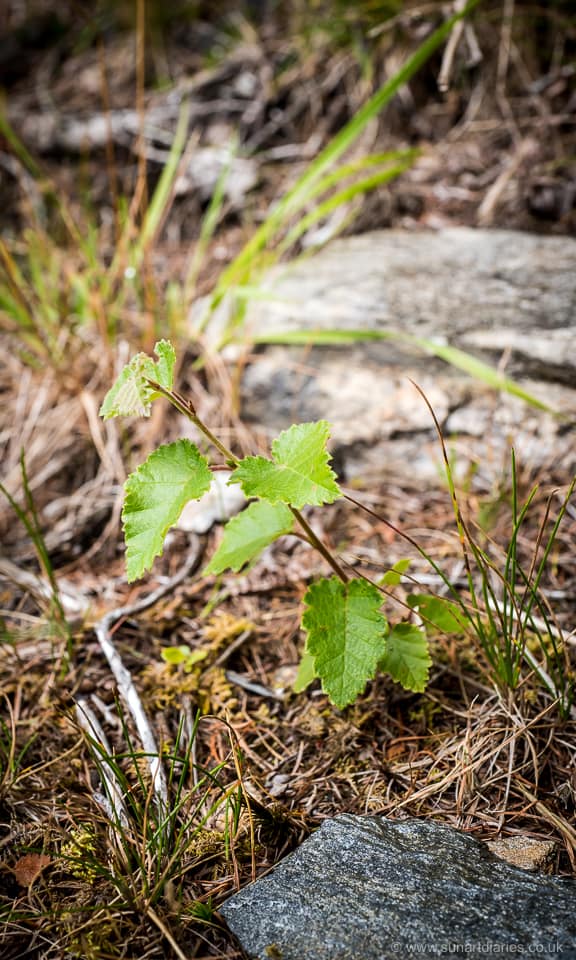
Birch seedling
Parts of the peninsula have extensive broadleaved woodland and the area is famous for its oakwoods around Salen and Ariundle. We have hazel copses, a large amount of willow and alder carr, some grand old oaks and lots of birch.
Or lots of rhododendron, depending where you look, though it is gradually being cut back.
Mixed established deciduous woodland has excellent biodiversity and oak trees are famed for having more associated species of wildlife - including bacteria and fungi, lichens, free algae, mosses, vascular plants, invertebrate animals, birds and mammals - than any other tree in the UK.
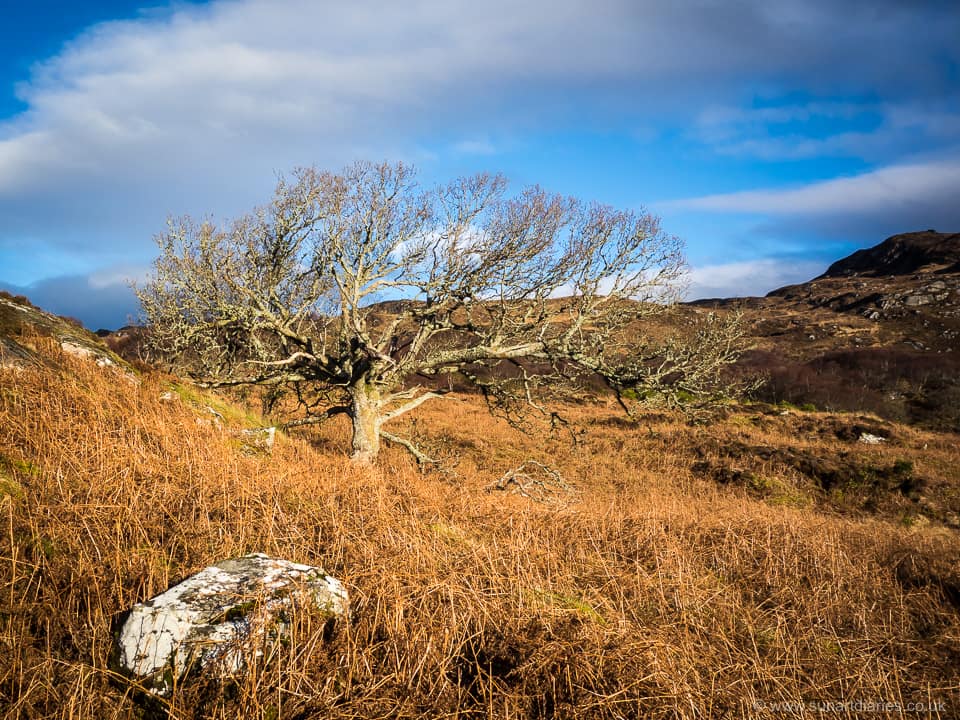
Oak, late November
However, unfortunately, it’s true to say that on Ardnamurchan - and in lots of other places in the Highlands - mighty oaks from little acorns do not grow 1.
The missing generation
It’s easy to find seedlings a few inches high and the mature trees are obvious. What’s missing, or at least significantly under-represented, are saplings and small bushes.
For example, we have two or three rowans (mountain ash) close by the house. All are mature trees (~15+ feet tall) laden with berries from late summer onwards. All spring and summer I’ve been finding 3-5" tall (short?) rowan seedlings, perfect in everything but stature.
But there are no rowans on the plot that are waist or head height.
It’s all, or almost nothing.
Well, not quite. You can find these missing generation(s) of spindly saplings growing from cracks in steep rock faces or other inaccessible spots.
You can also find a few shin-high, multiply-branched, twiggy, de-leaved, stunted specimens. These often have fat little trunks and extensive root systems, out of proportion to the tree height, like a poor quality bonsai.
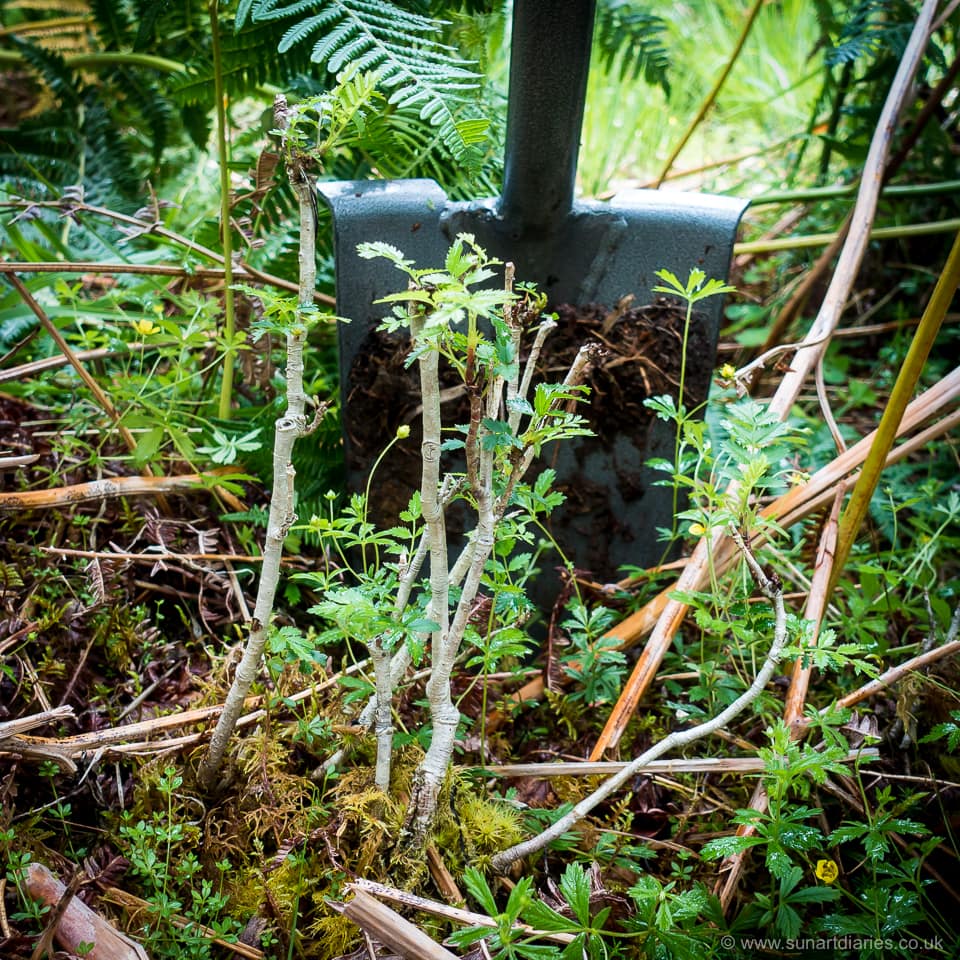
Browsed rowan
The grim reaper
The inaccessible saplings and the thick-limbed but dwarfed individuals give an obvious clue as to the fate of the missing generation.
They are being, or have been, browsed to extinction.
There’s no regeneration of native woodland because as soon as a tree is tall enough to be noticed it’s a midnight snack for deer.
On very steep slopes the deer cannot graze so the saplings escape. However, there’s often little soil present, or the ground is unstable, or it dries out too much, so the tree never reaches maturity.
Accessible saplings get grazed and grazed again. The new juicy growing tips are nibbled away, leaving ever-thickening twiggy branches. Year after year this results in a stunted, distorted little bush, with lots of woody growth but few leaves.
Too much of a good thing
There are six species of deer in the UK - red, roe, fallow, sika, muntjac and Chinese water deer. Of these, the first two are native to the UK with the rest being imported. However, fallow deer were here before the last ice age and were re-introduced after the Norman Conquest (11th Century).
Red and (particularly) roe deer are widespread and, in places, common.
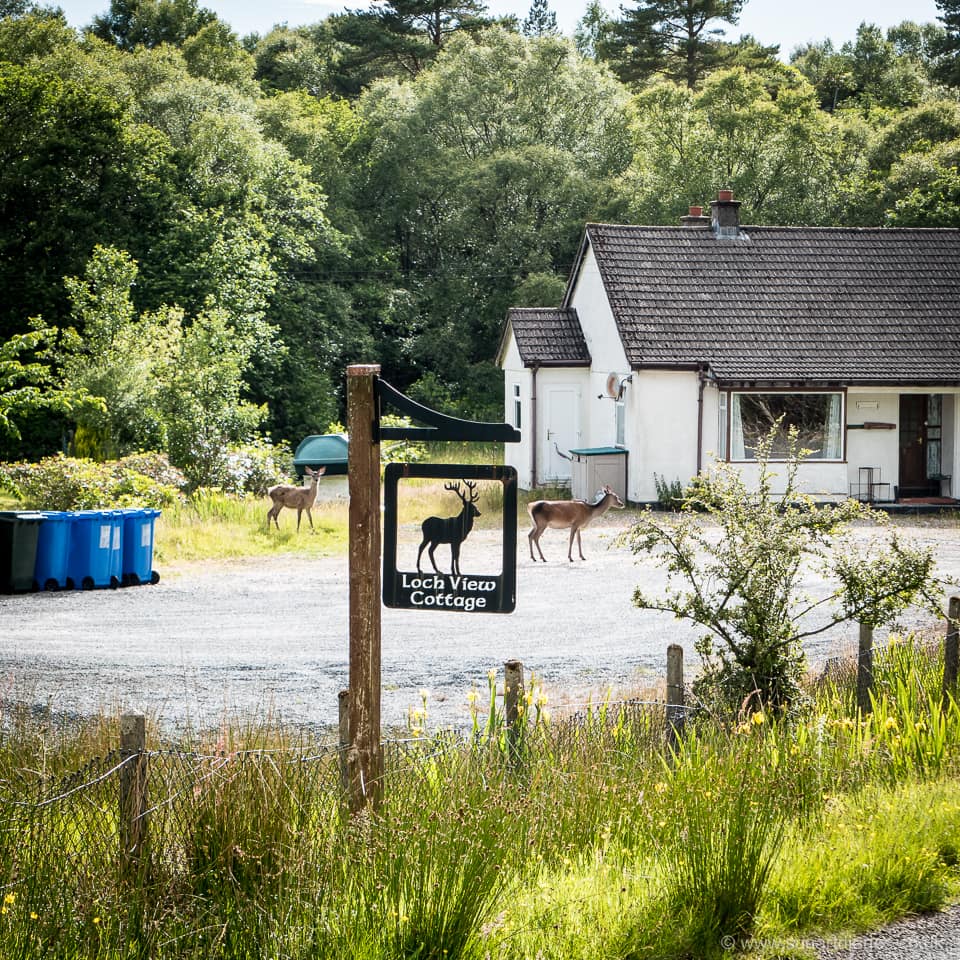
Deer … they’re everywhere
Too common.
In Scotland, red deer densities (PDF) can be greater than 30 per km2 in places, with very high levels in the Grampians and north and west of the Great Glen.
It is estimated that the current red deer population in Scotland is in excess of 450,000 head. This number has increased at least three-fold since 1959 when The Deer (Scotland) Act was introduced in response to a growing awareness of the damage to agricultural crops and native woodland.
In 1959 the recommendation was that an optimum number of red deer in Scotland was ~60,000. ‘Optimum’ in terms of reducing crop damage and allowing natural reforestation without ugly and expensive fencing.
Presumably not ‘optimum’ in terms of animals available for stalking. Which is a significant part of the problem …
Simon Pepper (ex-WWF Director for Scotland and Deer Commission) has written a brief account of “the deer problem” in Scotland and Reforesting Scotland nicely describe the impact and management of deer. I won’t rehash the case they make here but I think it’s compelling.
The camera never lies
Our plot is not fenced and deer regularly come down off the hill or out of the surrounding woodland. I occasionally spook them when I’m wandering about clearing rhododendron or birdwatching. At night their visits become more frequent … we might not see or hear them but the dog detects them with her ultra-sensitive radar and growls quietly.
They trample regular ‘game trails’ across parts of the plot, moving from one block of woodland to another during the night, or going down to the shore.
I’ve positioned a trailcam in likely looking spots and regularly ‘see’ red deer and, about 10-fold less frequently, roe deer. Whether this reflects the population density of the two species or is a consequence of the locations used for the camera is unclear.
It’s very common to ‘see’ a red deer hind with a calf in tow. Stags are a lot less frequent.
At times they descend from the hill mob-handed, late in the evening, intent on the destruction of almost everything except rhododendron (which unfortunately they don’t eat due to the grayanotoxins in the leaves).
Reforestation and stalking
It’s ironic that deer are woodland animals, yet their presence in large numbers prevents the regeneration of the forests in which they should flourish. Red deer from open moorland are smaller, less well conditioned and have higher winter mortality than woodland deer.
Inevitably, large scale culls have been unpopular with the general public and the landowners who provide stalking 2.
Importantly though they have been effective. They have reduced the numbers of deer on the land and have allowed the natural regeneration of forest without the need for fencing (which brings its own problems).
Richard Baynes has written about the consequences of the deer cull in Glen Feshie, both in terms of the uproar in the shooting community and in the resulting improvement in reforestation. The income from stalking is the same now as before the cull; clients are “prepared to pay more to hunt a scarcer, wilder animal”.
For a more extensive discussion of reforestation and biodiversity, accompanied by outstanding photographs, I recommend you have a look at Alan Watson Featherstone’s blog.
Solutions
I love deer.
Particularly braised slowly with a good quality, full-bodied red and winter vegetables 😉
However, I don’t like venison so much I could make a serious dent in the local population of deer.
Therefore, other measures are needed to deter deer and to encourage the regeneration of trees. In turn this will decrease the triffid-like invasion by rhododendron and increase the native wildflowers and understory vegetation.
Deer fencing remains an option but is unsightly, expensive and - because of access issues - would require gates and/or cattle grids. Properly maintained it is the only certain way to exclude deer.
Lion dung has proved tricky to source, but may not be effective anyway.
I’ve planted a few tree seedlings ‘rescued’ from inaccessible areas, together with a dozen or so willow ‘sticks’ to provide early season pollen for bees. Several of these have already been decimated by the deer.
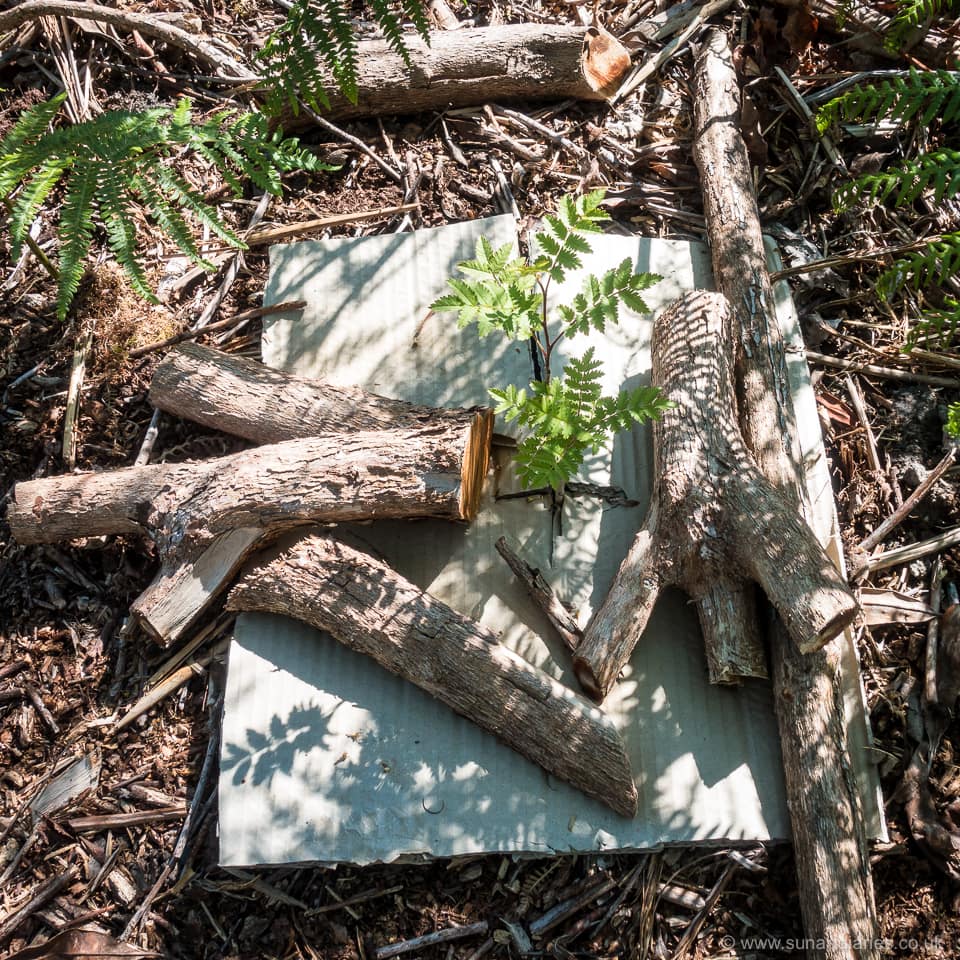
Transplanted rowan seedling
I’ve therefore protected some with mesh tree guards to help them get well-established.
I’m intending to plant another hundred or so bareroot native trees this autumn. Rather than littering the plot with dozens of unsightly corrugated tubes I’m hoping to exploit the topography to barricade access points, only putting tree guards around the saplings on the periphery. Additional temporary fencing will be added where needed if the barricades alone prove to be ineffective.
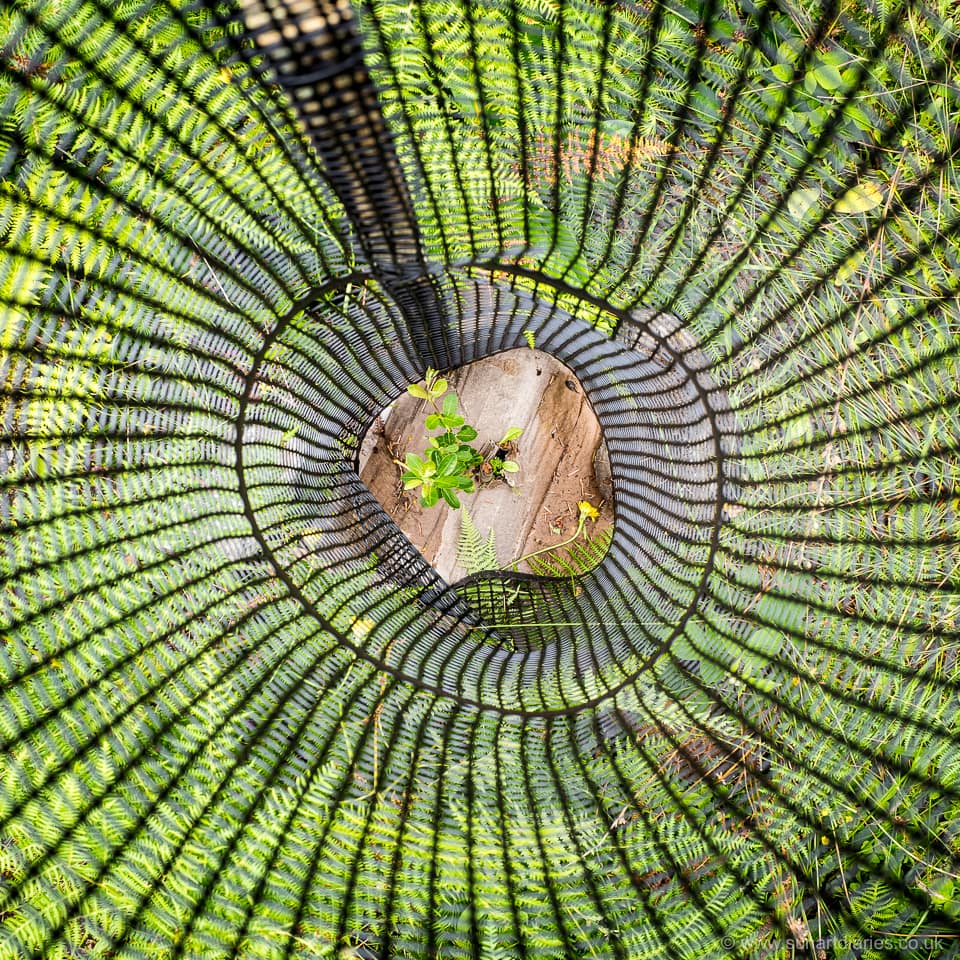
Willow cutting with tree guard
Or when … 😞
Notes
Laga Farm on Ardnamurchan has a large fenced area of hillside overlooking Laga Bay in which native trees have been planted. The sparse woodland is only six years old but is already developing really well and is wildlife-rich … and will undoubtedly get better. In addition to the planted trees there is also a large amount of natural tree regeneration now that the deer are excluded.
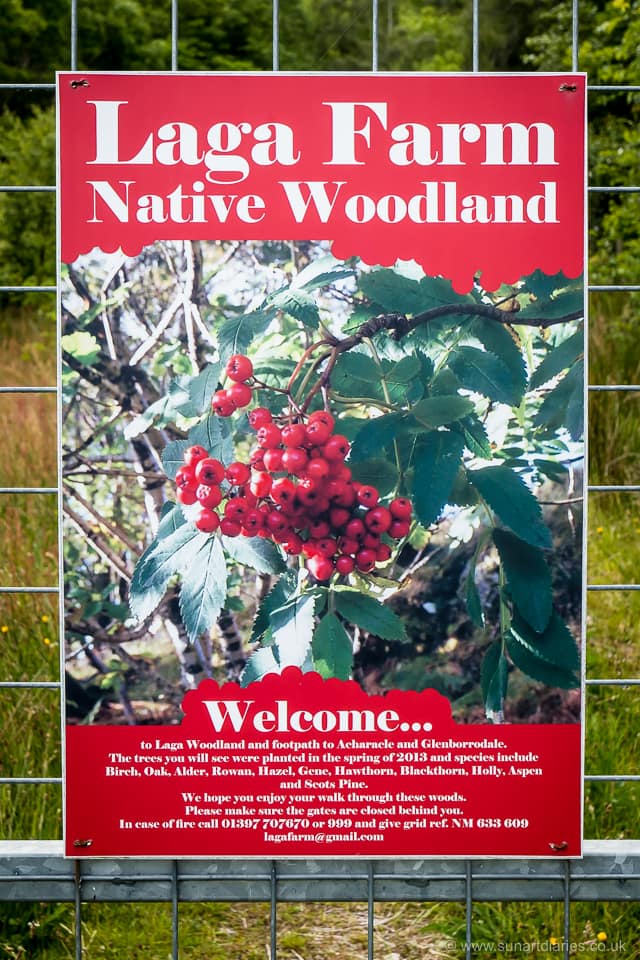
Laga Farm Native Woodland